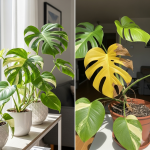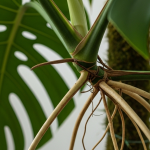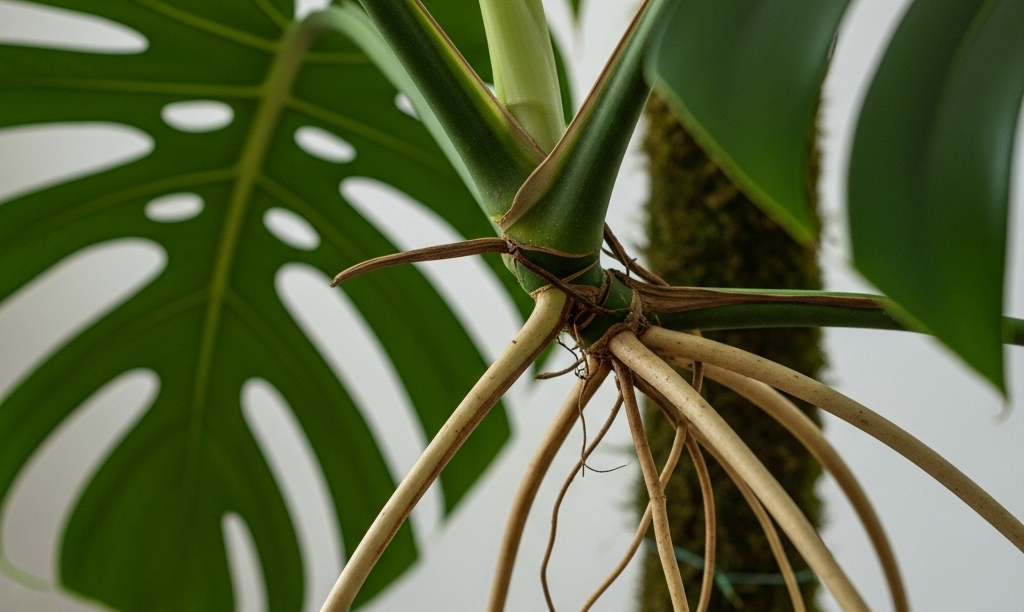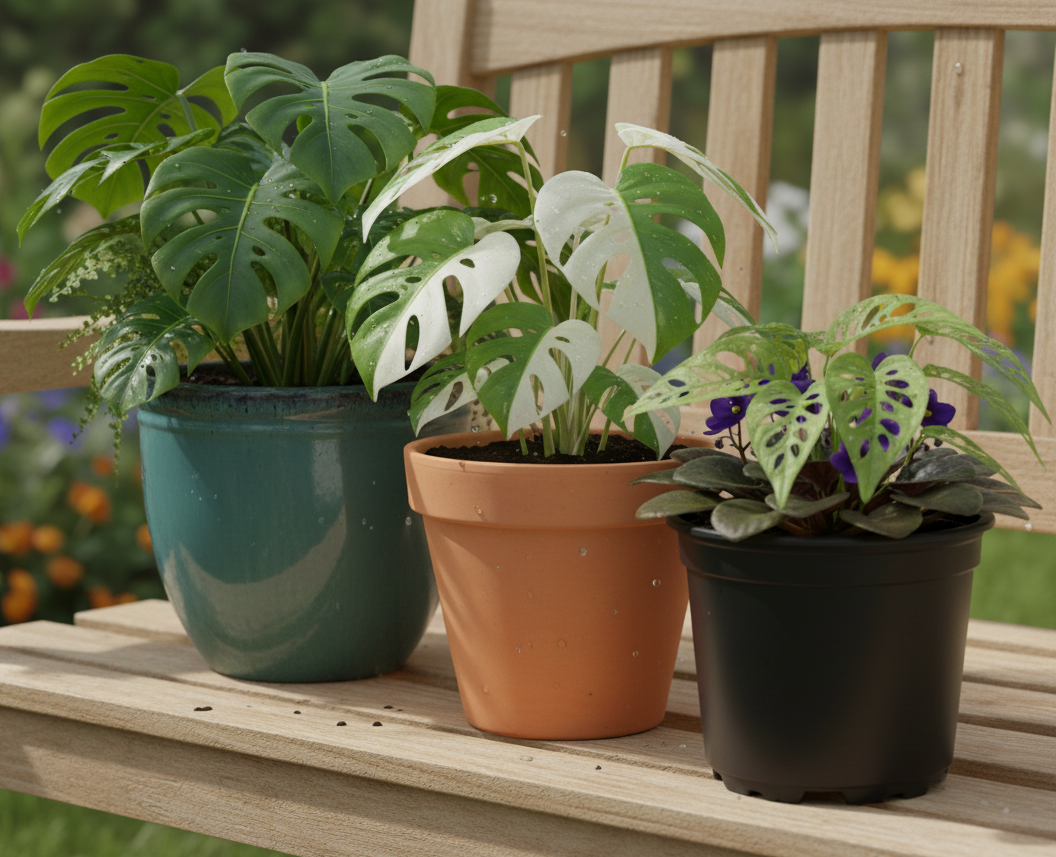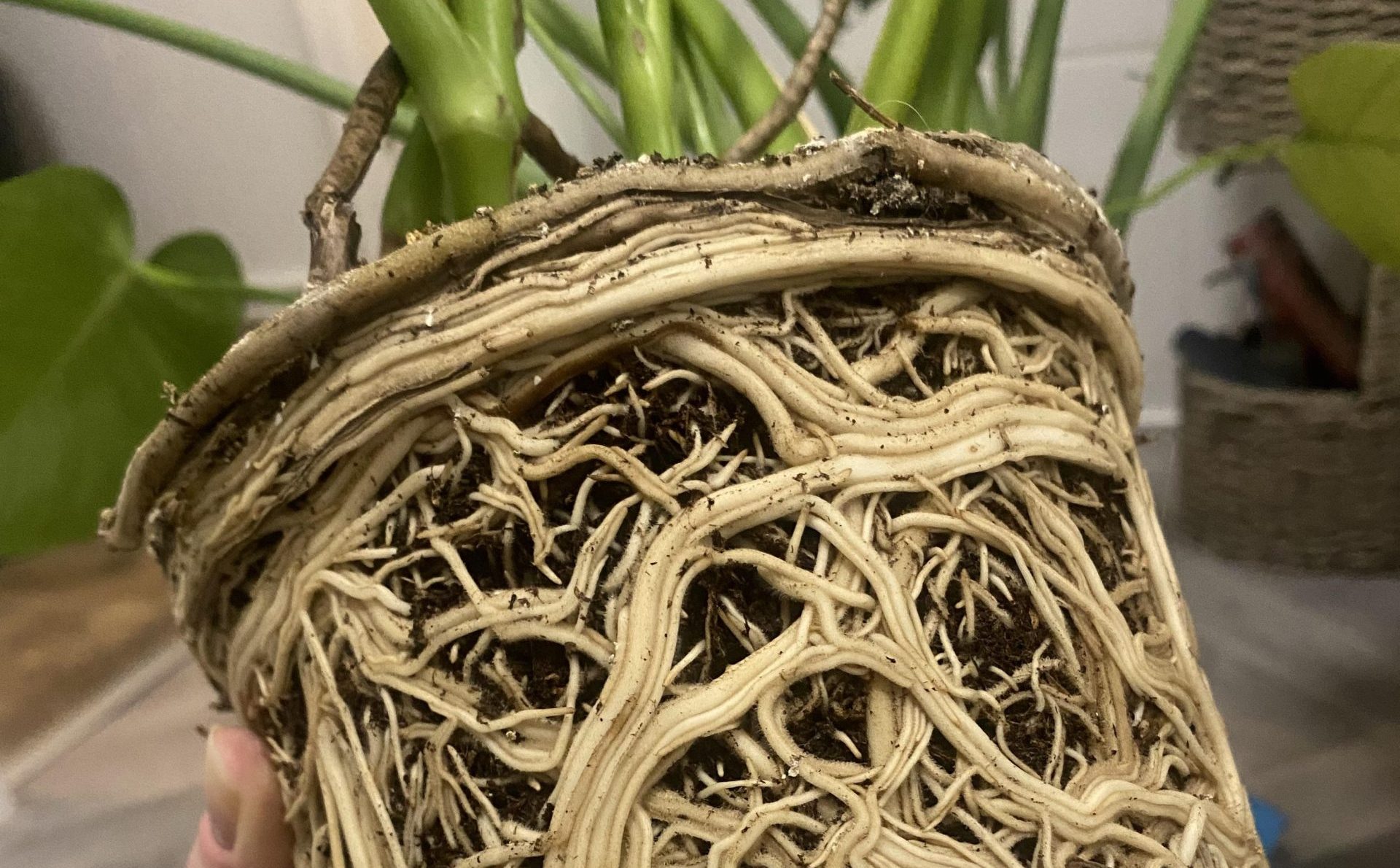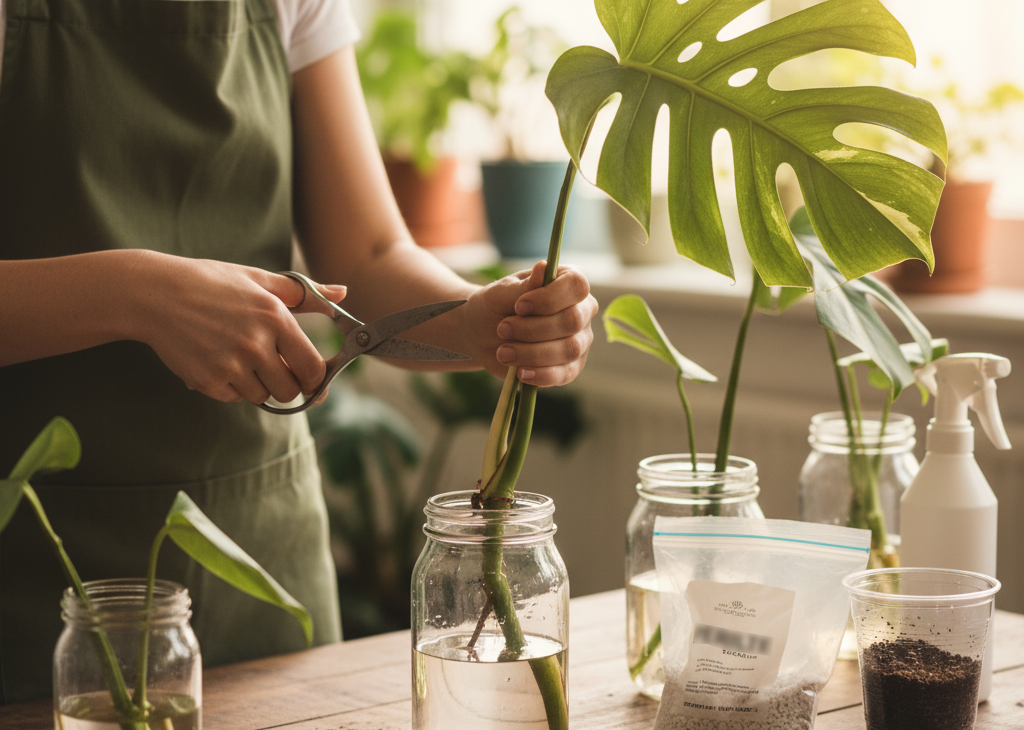Monstera aerial roots often leave plant parents scratching their heads. “What are they for?” “Should I cut them?” “Can I use them to grow new plants?” In this guide, I’ll answer all these questions and more, sharing my own experiences with Monsteras in my Aussie home and my South African travels where I’ve seen these plants growing wild.
By the end of this post, you’ll know exactly what to do with aerial roots, how to train them, and how to avoid common mistakes—plus, you’ll learn a few insider tricks for keeping your Monstera happy and healthy.
Table of Contents
- What Are Monstera Aerial Roots?
- What Do Monstera Aerial Roots Look Like?
- How to Handle Aerial Roots on Your Monstera
- Can You Propagate Monstera Using Aerial Roots?
- How to Train Monstera Roots Into a Moss Pole
- Do You Really Need a Moss Pole?
- Why Doesn’t My Monstera Have Aerial Roots?
- Why Are My Monstera Roots Shriveling?
- Tips and Tricks for Healthy Aerial Roots
- Common Monstera Aerial Root FAQs
1. What Are Monstera Aerial Roots?
Monstera aerial roots are thick, cord-like roots that grow out of the vine above the soil. If you’ve seen a Monstera climbing a tree in the wild, you’ve witnessed these roots in action—they act like grappling hooks, anchoring the plant to a tree trunk, wall, or other structure.
In nature, aerial roots do more than just anchor the plant. They also help Monsteras absorb water and nutrients from their environment. Indoors, these roots won’t reach trees, but they still serve as a sign of a thriving, vigorous plant.
Think of them as your Monstera’s climbing arms—ready to reach for the sun.
2. What Do Monstera Aerial Roots Look Like?
Aerial roots start small, brown, and firm, often appearing as little nubs along the vine. Over time, they can grow several feet long, especially if your plant is mature or climbing a support.
On my own variegated Monstera, the aerial roots formed a tangle at the base of the plant, which looked like a miniature jungle in my living room. They’re not only functional but also add a wild, tropical vibe to your plant display.
Pro tip: Don’t panic if the roots look a bit gnarly—these roots are tough, and a little trimming won’t hurt.
3. How to Handle Aerial Roots on Your Monstera
Most indoor Monstera owners wonder if they should cut, guide, or leave aerial roots alone. Here’s how I handle mine:
- Trimming: If the roots grow into a big pile on the floor, trim them back. I usually leave some length for aesthetics but remove anything that interferes with moving the plant.
- Guiding Into Soil: Some people tuck their aerial roots into the potting mix to provide extra moisture and stability. I occasionally do this, but it’s not necessary for the plant’s health.
- Watering Roots: Don’t bother trying to water aerial roots in cups. Monsteras absorb enough moisture from regular watering, and excess water can lead to rot or clutter.
Remember: aerial roots grow back. So, trimming them is a safe and low-maintenance way to keep your Monstera tidy.
4. Can You Propagate Monstera Using Aerial Roots?
Nope. Despite what you might read online, you cannot grow a new Monstera from an aerial root alone.
To propagate, you need a node—the spot where the leaf meets the vine. The node contains the “eye” from which a new vine will sprout. When I propagate my Monstera, I always make single-node cuttings with a leaf and, if possible, some aerial roots.
Water propagation tip: Place the cutting in a jar of water so that the node is fully submerged. White roots will start forming in a few weeks.
Soil propagation tip: Plant the cutting directly into moist, well-draining soil, keeping the mix slightly damp until roots establish.
5. How to Train Monstera Roots Into a Moss Pole
If you love a climbing Monstera (and who doesn’t?), moss poles are a lifesaver. Training aerial roots into moss poles encourages vertical growth, creating that iconic jungle look.
Step-by-step:
- Secure the vine to the moss pole using plant ties, twisty ties, or soft string.
- Moisten the moss to encourage roots to grab hold.
- Gently press aerial roots against the moss. They’ll naturally attach over time.
I made my own moss pole for my variegated Monstera, and honestly, it’s far sturdier and better than anything I’ve seen in stores. If you want, I can write a DIY moss pole tutorial next—it’s super simple and satisfying to make.
6. Do You Really Need a Moss Pole?
Not at all. If you’re happy with a sprawling Monstera, you can let it trail or use a simple bamboo tripod. Moss poles are more about aesthetics and supporting large plants.
Even with a bamboo tripod, aerial roots will grow and cling naturally. It’s all about what works for your space and how wild you want your plant to look.
7. Why Doesn’t My Monstera Have Aerial Roots?
Young Monsteras often don’t produce aerial roots. As the plant matures, aerial roots will emerge.
Juvenile plants or recently propagated cuttings may take months—or even years—before developing these climbing appendages. Patience is key!
8. Why Are My Monstera Roots Shriveling?
Shriveled aerial roots are usually caused by:
- Physical damage (snapped or broken roots)
- Environmental stress (extremely dry air or poor light)
Unlike orchids, Monstera aerial roots don’t need constant misting—they stay firm even in low humidity. Trim any damaged roots and check your watering and care routine if multiple roots appear shriveled.
9. Tips and Tricks for Healthy Aerial Roots
- Keep your Monstera in bright, indirect light.
- Provide a sturdy support if the plant is climbing.
- Let roots naturally grow; trim only when necessary.
- Ensure your plant has a healthy vine and node structure to encourage propagation.
- Use a moss pole for aesthetics and better vertical growth.
10. Common Monstera Aerial Root FAQs
Q: Can I cut all aerial roots without harming the plant?
A: Yes, but leave some if you like the look. Monsteras grow new roots quickly.
Q: Can aerial roots absorb water indoors?
A: Not significantly. The plant mainly relies on soil for moisture indoors.
Q: How long do aerial roots take to attach to a support?
A: Anywhere from a few weeks to several months, depending on moisture, light, and vine maturity.
Q: Can aerial roots cause my plant to outgrow the pot?
A: They won’t grow into soil automatically unless you guide them. But Monsteras do become top-heavy, so a moss pole or trellis helps.
Final Thoughts
Monstera aerial roots are a sign of a happy, healthy, and mature plant. Don’t stress about them—they’re natural climbing tools and can even be aesthetically pleasing. Whether you let them trail, trim them, or train them into a moss pole, your Monstera will thrive with the right care.


